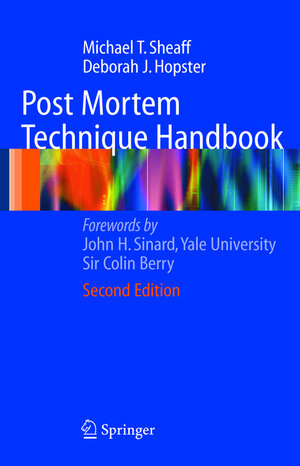
From reviews of the 1st edition:
This is a practical benchtop manual, which is comprehensive and fills a gap in the market. It is recommended, especially as an introductory handbook for trainees in anatomical pathology. (Clinical, Anatomical, Experimental Pathology 2002:34;204.)
The textbook should be available n each institute of pathology which is still performing autopsies, especially when young colleagues are to be trained in this technique. (Electronic Journal of Pathology and Histopathology 19-03-01.)
Post Mortem Technique Handbook
von Michael T. Sheaff und Deborah J. Hopster, Vorwort von J.H. Sinard und Vorwort von C. Sir BerryPost Mortem Technique Handbook 2nd edition is a comprehensive practical guide to performing the modern post mortem. The text is well illustrated and presented by system. The book covers both the standard evisceration techniques and the many different dissection techniques that may be necessary in a variety of circumstances likely to be encountered by a practicing pathologist.
The recent debates regarding organ retention have lead to major changes in the legal groundings of post mortems, and yet recent studies confirm the continued need for autopsy information, given the inaccuracies of pre-mortem diagnosis. This new and thoroughly revised edition includes the most recent guidance from the Royal College of Pathologists and from the College of American Pathologists.
A must-have for all those who conduct post mortems, this book is essential for pathologists in training, medical students, and mortuary technicians, but will also be useful to experienced practitioner requiring information on the less common techniques.
Both authors are Consultant Histopathologists and Honorary Senior Lecturers at the University of London, and are closely involved in both undergraduate and postgraduate education and examination.




